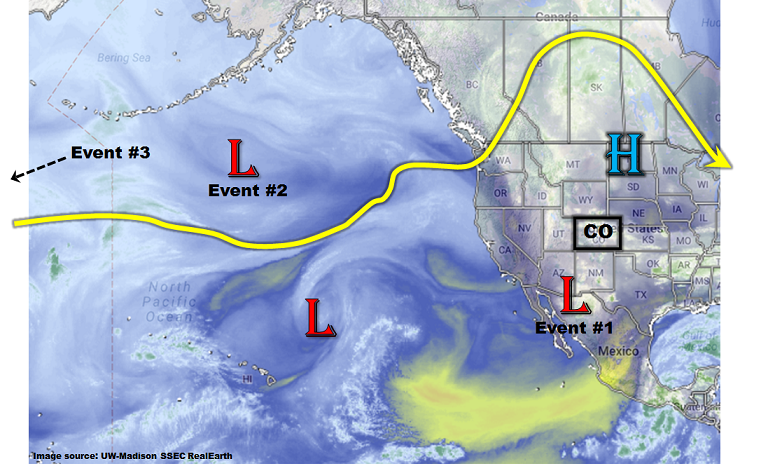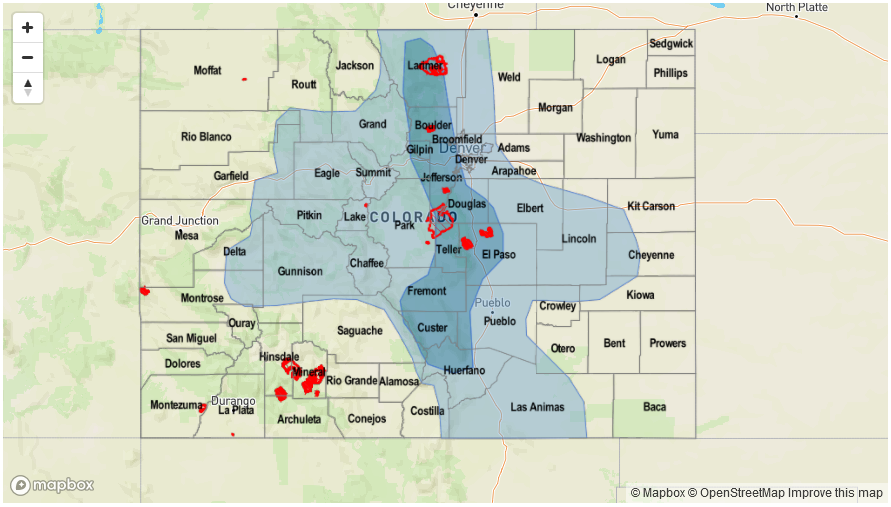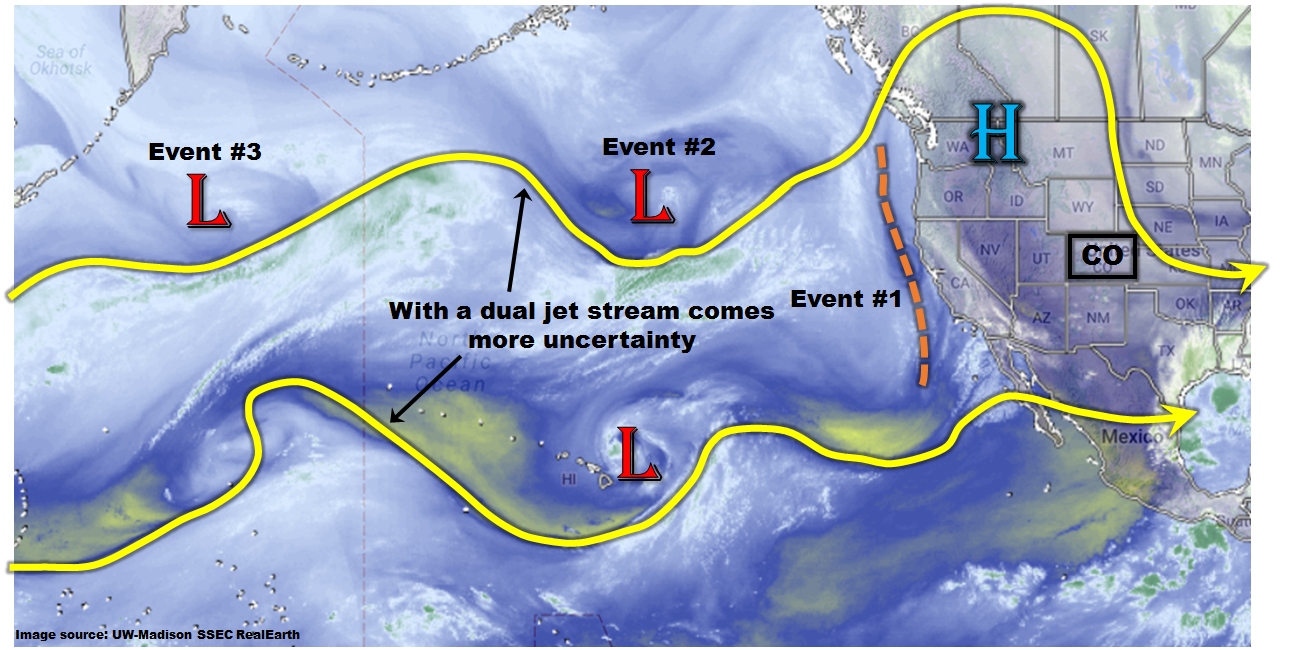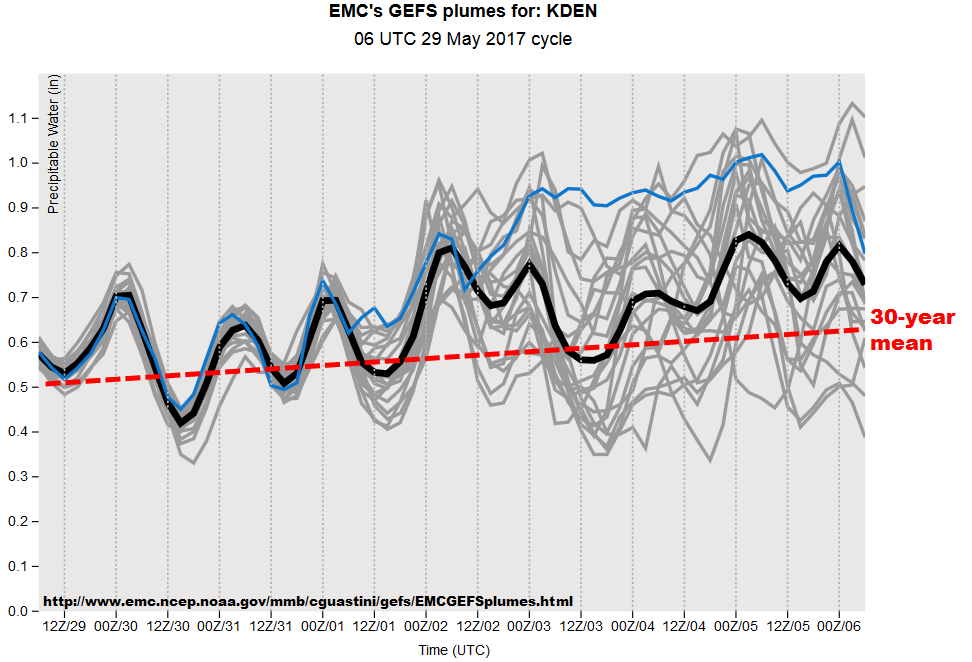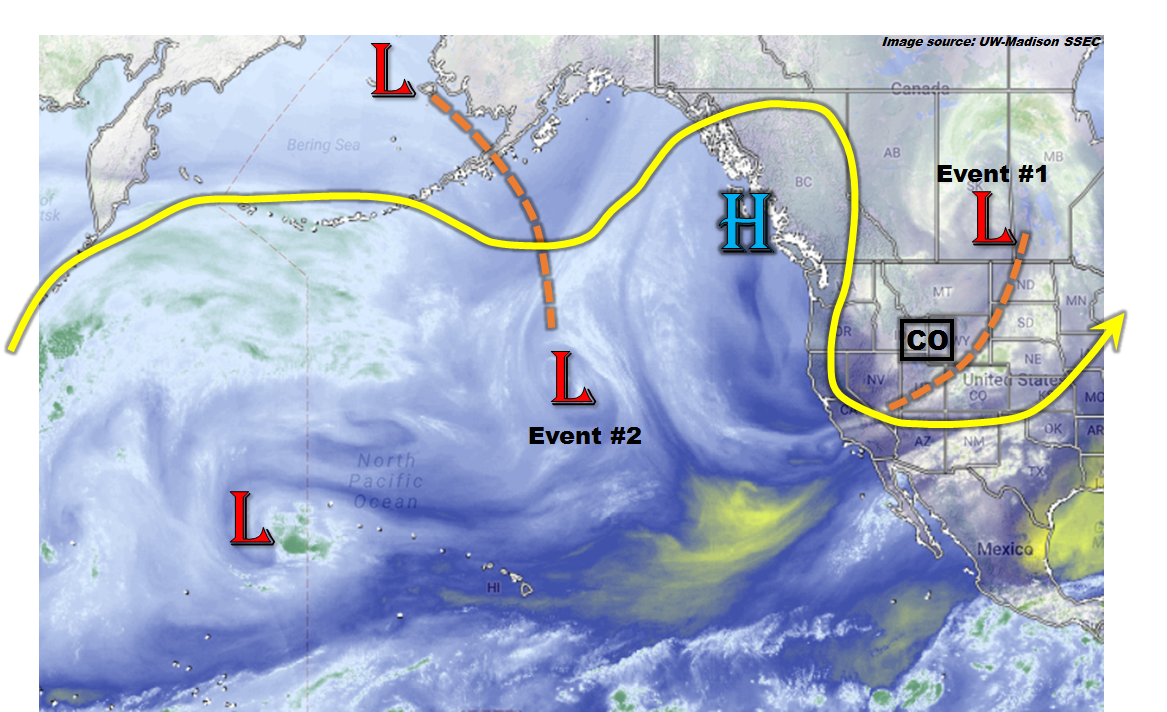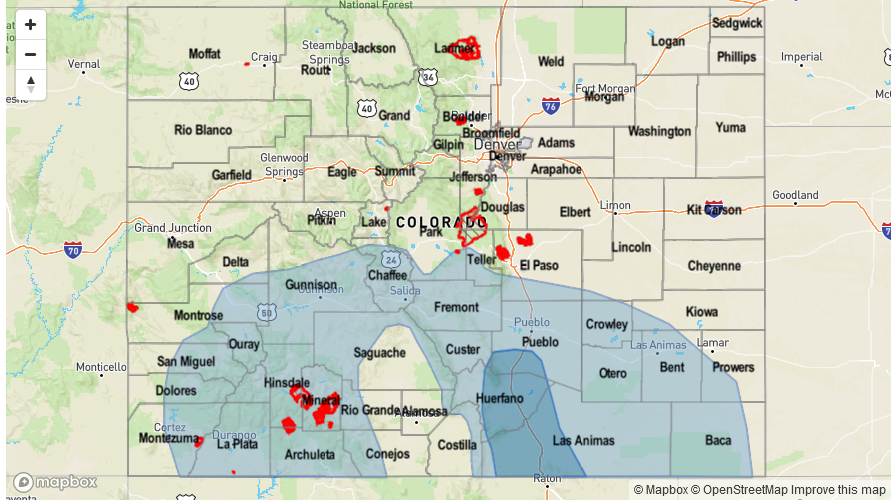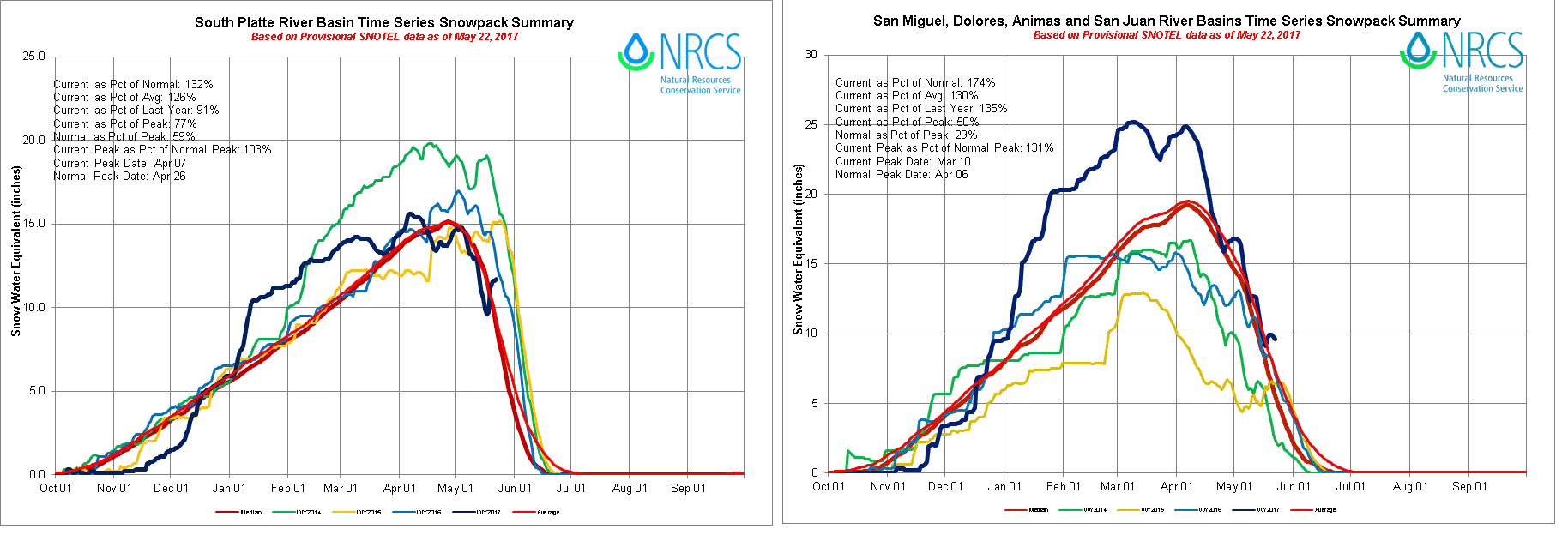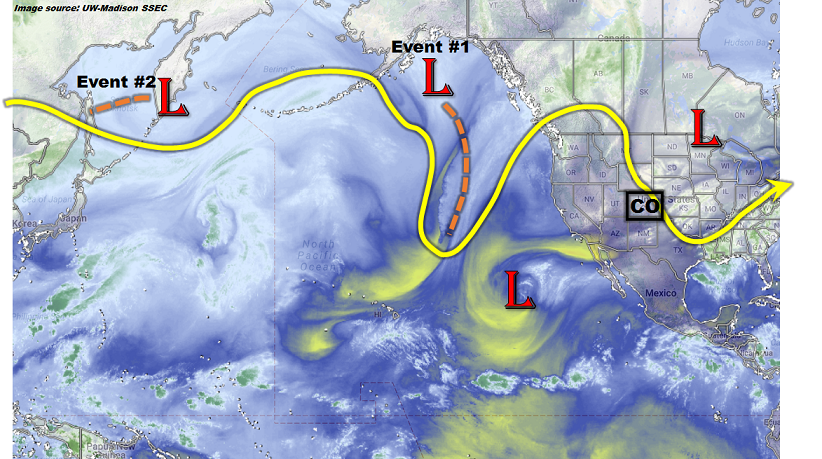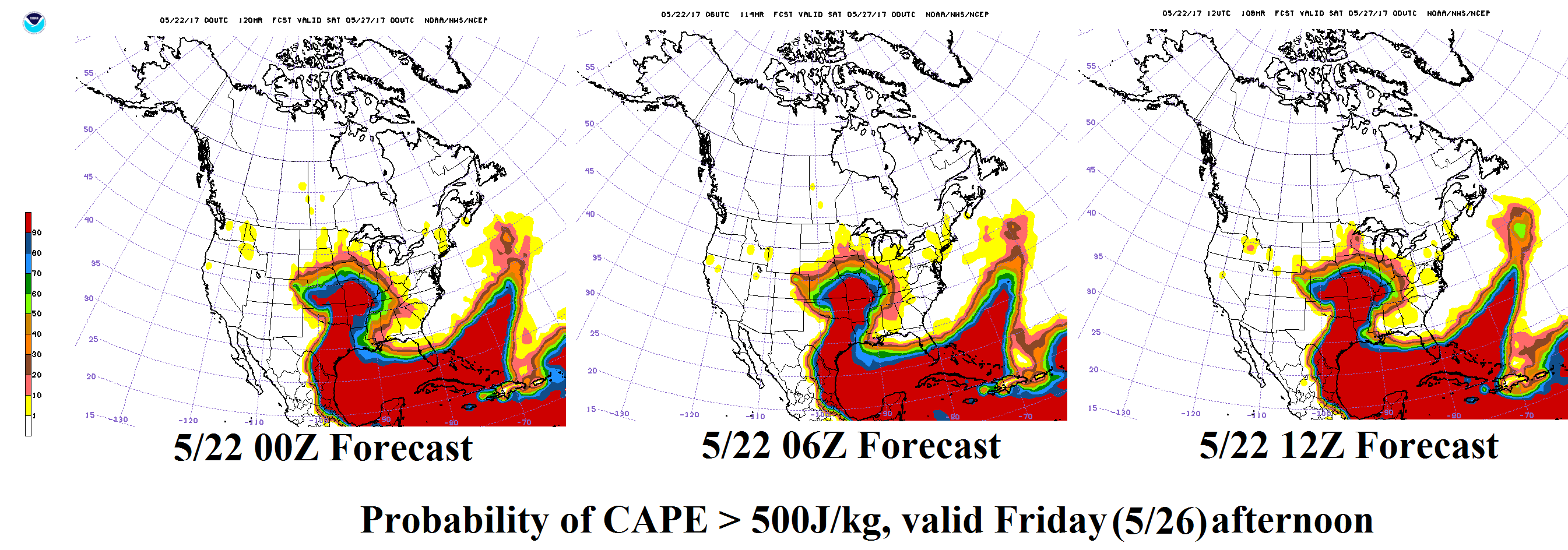Issue Date: Thursday, June 1st, 2017
Issue Time: 3:00PM MDT
Valid Dates: 6/2 – 6/16
In sharp contrast to the jet stream pattern observed just three days ago (see previous Flood Threat Outlook from 5/29), today’s pattern (see water vapor image below) shows one, nearly continuous jet stream across the northern Pacific Ocean. Closer to home, an upper-level ridge is currently positioned over the northern US Great Plains, allowing for seasonably warm temperatures across our state. A cut-off disturbance currently over southwest New Mexico is causing scattered showers and storms today, though the flood threat is limited. We expect this low pressure to affect Colorado through Friday, which is categorized as Event #1. Very isolated heavy rainfall is possible with this, but no flood threat is anticipated.
After this cut-off low moves to the east, the high pressure will re-establish control over Colorado, causing a multi-day period of very warm to hot weather. This will be especially true west of the Continental Divide, where temperatures are expected to average 5-15F above normal for a 5-7 day stretch beginning on Friday. Needless to say, this will take a strong toll on the remaining snow pack, which we expect to be mostly gone by this time next week. The left chart below shows that the statewide Snow Water Equivalent is running almost twice above normal (though this reading is partially due to a “divide by a small number” effect given that the average SWE statewide is currently less than 3 inches). However, of particular interest is the South Platte River which still has an average SWE above 10 inches. Fortunately, because the largest positive temperature anomalies are expected to remain west of the Continental Divide, we do not foresee a significant flood threat even for the South Platte basin from snow melt this year. However, localized streams and creeks in the Colorado River and South Platte River basins are likely to see some minor flooding. We will monitor these details in daily Flood Threat Bulletins.
Shifting the focus back to precipitation, we have identified two other “Events” in addition to Event #1 that will provide elevated precipitation chances for Colorado over the next 15 days. These are described below.
Event #1: Friday (6/2)
No Anticipated Flood Threat a round of showers and weak storms likely across the Northeast Plains
As a cut-off low pressure systems moves across New Mexico, one more day of shower and storm activity is expected across the state. Similar to the past few days, instability will not be lacking with morning sunshine igniting early afternoon storms across the Front Range and Central Mountains. However, with wind shear continuing to be weak, sustained heavy rainfall appears unlikely. Instead, we anticipate a broad region of 0.25 to 0.5 inches of precipitation with higher amounts in the Northeast Plains where up to 1.0 inch could fall as storms get a bit better organized. However, with flash flood guidance exceeding 1.5 inches per hour in this region, we do not anticipate a flood threat.
Event #2: Monday (6/5) through Wednesday (6/7)
No Anticipated Flood Threat as heavy rainfall threat is suppressed
The disturbance that will bring about Event #2 will face similar long odds as Event #1, because it will be outmatched by the high pressure ridge. Expect a three day period of scattered to numerous showers and weak storms starting in the higher terrain and then spreading into the Palmer and Raton ridges. With plenty of low-level moisture, isolated heavy rainfall cannot be ruled out, but the flood threat remains suppressed. Nonetheless, up to 1.25 inches of precipitation is possible over this period especially in the higher elevations and foothills of southern Colorado.
Event #3: Sunday (6/11) through Tuesday (6/13)
Elevated Flood Threat as disturbance approaches the state from the west
A disturbance currently in the far western Pacific Ocean is expected to rapidly move eastward within the elongated jet stream. It is expected to affect our weather starting Sunday 6/11 for regions west of the Continental Divide, and one to two more days for regions east of the Divide. West of the Divide, the flood threat appears subdued because the disturbance will be transporting in drier air. However, east of the Divide, with moist upslope flow available, a day or two of heavy rainfall looks increasingly likely. In typical fashion, expect early storms to erupt in the higher terrain of the Front Range and Southeast Mountains, then move to the east. The eastward extent of the precipitation is currently uncertain, but it is possible that organized heavy rainfall producing storms could make it to the Kansas border. At this time, the precipitation map below is limited to 1.5 inches or less, but stay tuned to future Flood Threat Outlooks as we update this event’s forecast.

